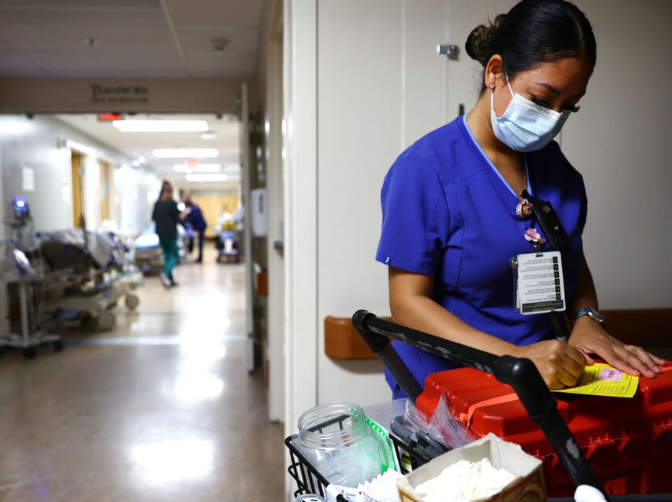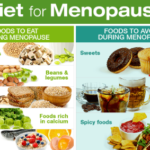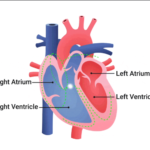The decline occurs concurrently with the novel coronavirus variety JN.1’s increased hold over hospitalizations in the United States.
According to data from the Centers for Disease Control and Prevention, coronavirus hospital admissions fell last week for the first time in over two months. Weekly hospitalizations decreased by about 10% from week to week, despite the fact that the number is still high.
According to CDC data, during the week ending January 13, over 32,800 new COVID-19 hospital admissions were reported, and during the same week, over 27,800 Americans were considered currently hospitalized owing to the disease on average every day. “COVID-19 rates have stabilized, or in some cases, decreased,” the CDC stated in a post on Friday, “despite test positivity (% of tests taken that were positive), ER visits, and hospitalizations remaining elevated nationally.”
Also read-US Health Officials Ask Major Cities To Use Indoor Masks During The “Triple Demic”

Hospitalizations
Meanwhile, the nation’s COVID-19 wastewater virus activity levels are still quite high, with the Midwest and South reporting the highest levels. The majority of COVID-19 cases are caused by JN.1, a recently discovered COVID-19 variation. According to CDC estimates released on Friday, the strain is probably to blame for 86% of the new coronavirus infections that have occurred in the last two weeks. It is also the most well-known version worldwide.

Hospitalizations
The CDC stated on Friday that “COVID-19 infections are causing severe disease less frequently than earlier in the pandemic,” although JN.1 doesn’t seem to be any more severe than prior coronavirus strains. Nevertheless, COVID-19 is killing hundreds of Americans every day, and about 10,000 deaths are linked to the virus, according to data from the World Health Organization for the previous month. The most recent COVID-19 vaccination is advised by medical professionals to help avert serious illness and death. But the shot’s uptake hasn’t been that strong.
Hospitalizations

Hospitalizations
Frequently asked questions
How can I prevent COVID and influenza?
Make sure you cough or sneeze into your elbow or a tissue, discard the tissue, and wash your hands right away. Steer clear of individuals who are confirmed or suspected of having the flu, COVID-19, or RSV, especially in crowded indoor areas. You might want to think about donning a mask.
What is the treatment for Corona flu?
The majority of adults with mild cases of COVID-19 can treat their symptoms similarly to how they would treat a seasonal flu: stay home and rest, take ibuprofen or paracetamol for fever and pain relief, stay hydrated, and use cough medicine if necessary. One of the most prevalent COVID-19 symptoms is fatigue.
What are the symptoms of the flu (RSV) and COVID-19?
Fever, coughing, and shortness of breath are common symptoms of COVID-19, respiratory syncytial virus (RSV), and influenza (flu). It can be challenging to differentiate between respiratory virus-related illnesses due to their similar symptoms.
Can you have a cold and COVID at the same time?
Respiratory viruses can sometimes infect you in pairs, so COVID-19 can also accompany a cold or the flu. It is known as “coinfection,” but as far as current scientific understanding allows, it is an uncommon occurrence.
What antiviral is used for the flu?
There are four FDA-approved influenza antiviral drugs recommended by the CDC for use against recently circulating influenza viruses.
- Rapivab (peramivir)
- Relenza (zanamivir)
- Tamiflu (oseltamivir phosphate, also available as generic)
- Xofluza (baloxavir marboxil)
Also read-US Health Officials Ask Major Cities To Use Indoor Masks During The “Triple Demic”
images source: Google
Disclaimer: The opinions and suggestions expressed in this article are solely those of the individual analysts. These are not the opinions of HNN. For more, please consult with your doctor




































